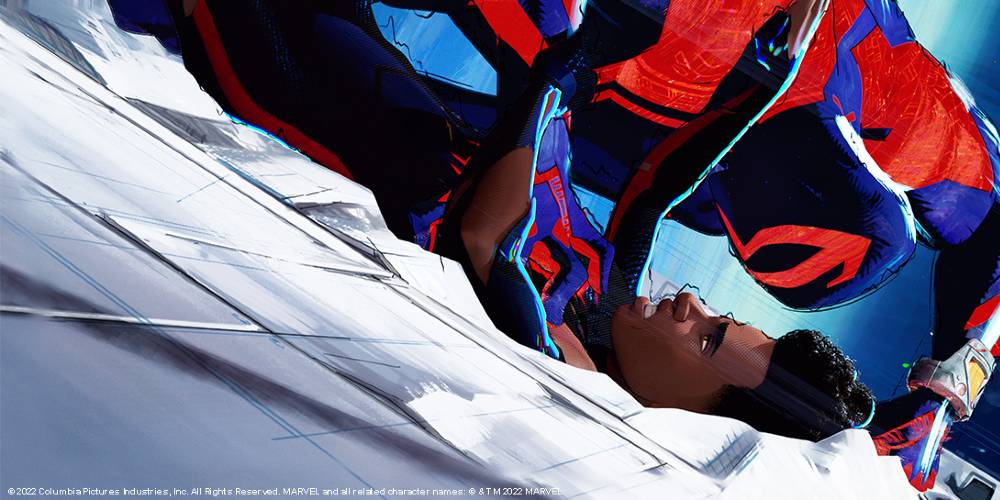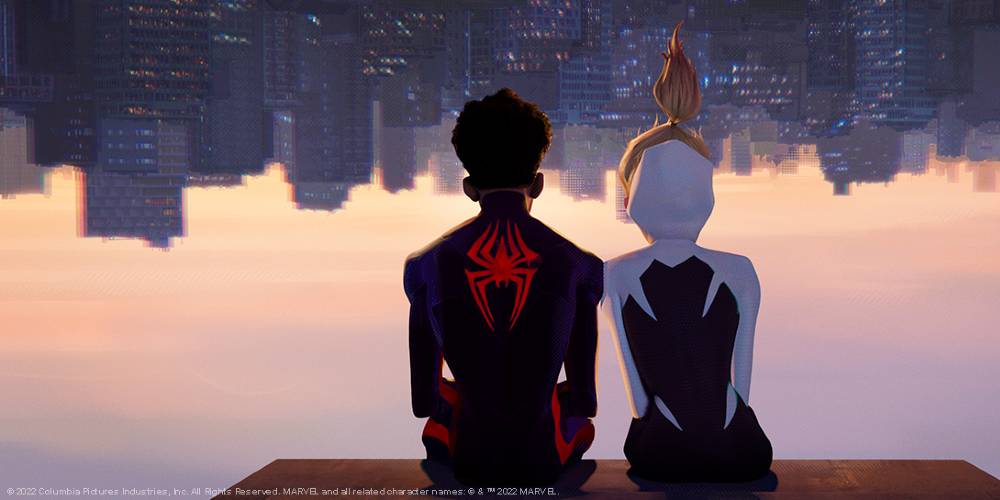Read also:
How to Watch FX Live Without CableHow To Watch AMC Without CableHow to Watch ABC Without CableHow to Watch Paramount Network Without CableMiles Morales’ second venture into the multiverse is thrilling, thematically dense, and above all else, a GORGEOUS work of animation.
It’s so, so wonderful that Spider-Man: Across the Spider-Verse loves comics. Not just their characters (though it does) or the superhero genre (though it does)—the medium of comics itself. Comics are an infinitely flexible form. They can engage in dialogue with popular works in other mediums! They can use space to shape their readers’ perception of time! They can use form and illustration style to capture the difference between perception and reality! Spider-Man: Across the Spider-Verse is, amongst other things, a celebration of comics and their possibilities. It is glorious.
Key to this celebration’s success is that Spider-Man: Across the Spider-Verse is not merely saying COMICS ARE AWESOME! Its creative team (led by directors Joaquim Dos Santos, Kemp Powers, and Justin K. Thompson and writers Phil Lord, Christopher Miller, and Dave Callaham) is wielding the full width and breadth of their own medium—animation—to do so. In doing so, Across the Spider-Verse both takes the baton from and builds on the work of its predecessor, 2018’s wonderful Spider-Man: Into the Spider-Verse. Into the Spider-Verse brought a crew of Spider-people (many rendered in their own distinct styles of animation) into the world of nascent Spider-Man Miles Morales (Shameik Moore), whose Earth served as the picture’s mothership style. Spider-Man: Across the Spider-Verse takes Miles—and by extension, the audience—into those other worlds, each of which has its own visual and action language.

Gwen “Spider-Woman” Stacy (Hailee Steinfeld), for instance, lives in a downbeat, watercolored world where emotion bleeds into palates whose first-act climax action setpiece (a bravura battle between Spider-Woman, Spider-Woman from another world Jessica Drew (Issa Rae), the Spider-Man of 2099 Miguel O’Hara (Oscar Isaac) and a displaced Renaissance-era-DaVinci design-esque Vulture (Jorma Taccone)) is built on the circular space of an art museum’s central gallery.
Pavitr “Spider-Man” Prabhakar (Karan Soni)’s look makes heavy use of pencil-styled lines, and his hometown Mumbhattan uses those same lines to emphasize its verticality—which adds to the visual tension when he and his fellow Spider-people have to deal with a collapsing building that’s falling horizontally: the angle disrupts the world’s established visual feel and in so doing emphasizes the danger and disruption of the potential disaster.
Spider-Man 2099’s world—home base to the interdimensional alliance of Spider-people he’s gathered—is one of hexagons, bold colors, and straight lines. It’s clean, striking, and very, very rigid—a reflection of its Spider-Man and his well-meant but heavy-handed-at-best approach to protecting the web of worlds. During its major setpiece, Miguel O’Hara and the system he’s built push Miles Morales to his absolute limit—even as his refusal to hold to the canon of Spider-people that Miguel desperately needs to believe is inviolate exposes the system’s cracks.

Spider-Man: Across the Spider-Verse‘s worlds and their renderings, taken in concert with comics-born visual language (the screen splitting into panels, illustrated sound effects) returning from Into the Spider-Verse celebrate and emphasize the infinite flexibility of comics as a form. Its story, in turn, celebrates and pokes at Spider-Man in ways both character-specific and conceptual—and in doing so, celebrates and pokes at Western superhero comic storytelling as a whole.
In a 2013 Atlantic article, comics critic David Brothers wrote, “Spider-Man has failure at his roots, but he isn’t defined by his tragedy. He’s defined by the fact that he keeps struggling and striving to be the person his uncle knew he could one day become.” For Miles Morales, Spider-Man is the becoming—doing right by New York, his parents, his late uncle, and himself. A year into web-slinging, he’s a good superhero, and he still has so much to figure out, so much he struggles with. But he knows where he wants to go and who he wants to become. For all Miles’ doubts and struggles, he takes the leaps of faith that life requires and embraces possibility. In doing so, he brings out the best in his fellow Spider-people, particularly Gwen.
For Miguel O’Hara, by contrast, Spider-Man is an irrevocably fixed point, and his insistence on that has curdled him. His big-picture goal and his moment-to-moment actions in the field are well-meant, even heroic, but he’s fixated on his failures. His fixation has made him rigid, and his rigidity makes him ruthless. For Miguel, Spider-Man is not a matter of what can be but what must be. In insisting on that, in desperately needing it to be true, he becomes Miles’ foe.

It’s a darn good Spider-Man story and a darn good superhero story—down to the dramatic cliffhanger. The action is impeccable. The meta-commentary on what folks expect from a Spider-Man story and what Spider-Man stories can be outside of those confines is thoughtful. The quiet moments where Miles and his fellow Spider-people have the space to connect and bounce off of each other are downright lovely—Miles’ sweet, romantic, uncertain reunion with Gwen is a personal favorite. Spider-Man: Across the Spider-Verse‘s cast, both returning and new, are uniformly excellent—with Daniel Kaluuya‘s Hobie “Spider-Punk” Brown being the standout new performance.
All told? Spider-Man: Across the Spider-Verse is a gorgeous, thrilling, thoughtful movie, and its celebration of comics as a medium is both wonderful and welcome. This is one of 2023’s best films.
Spider-Man: Across the Spider-Verse is now playing in theaters.